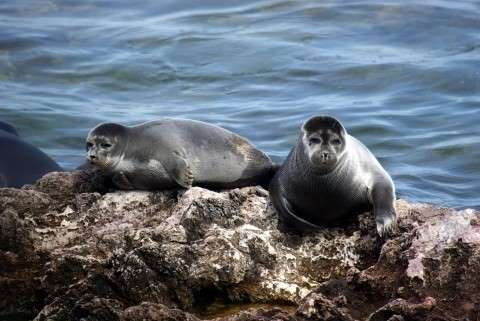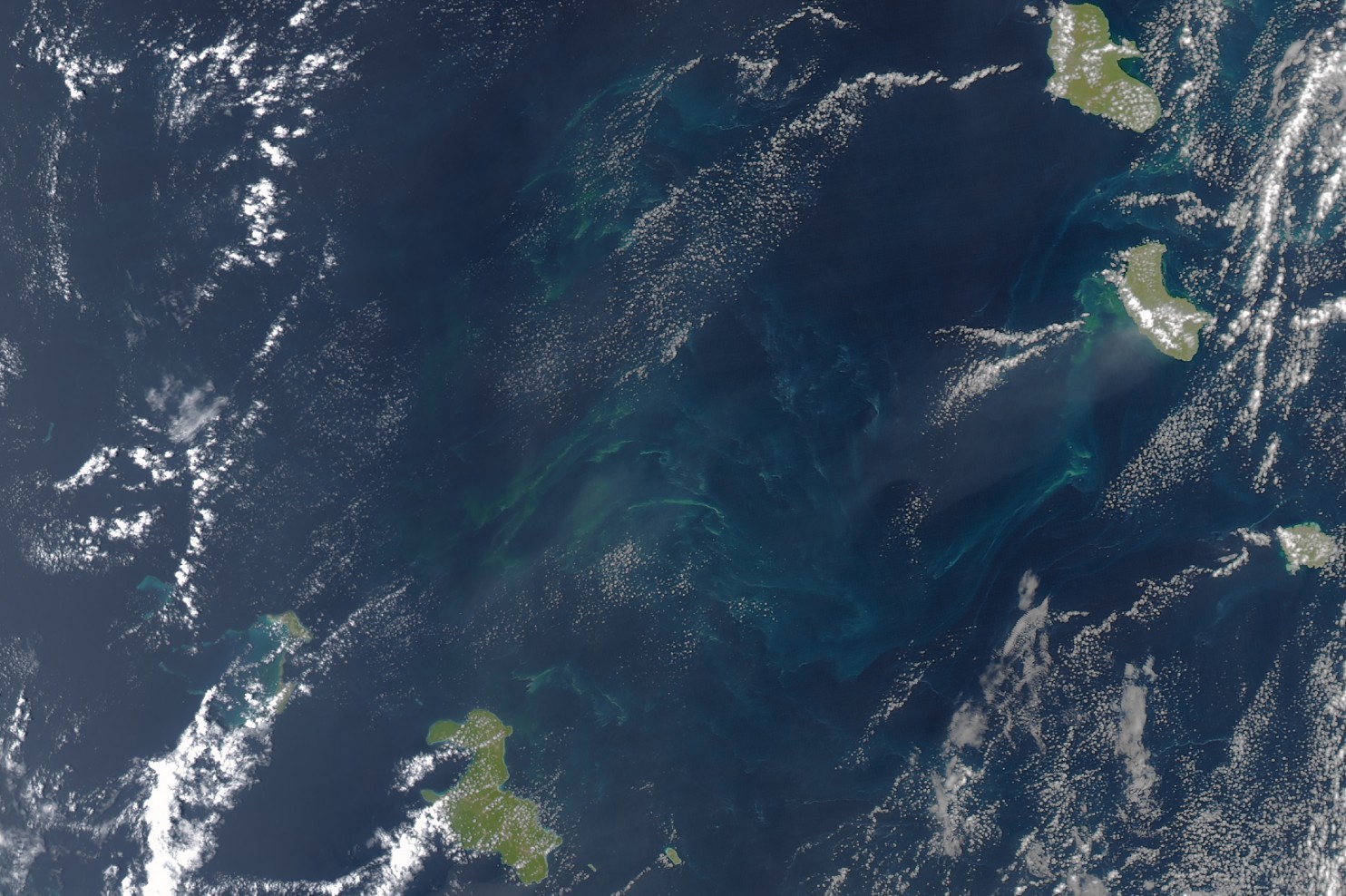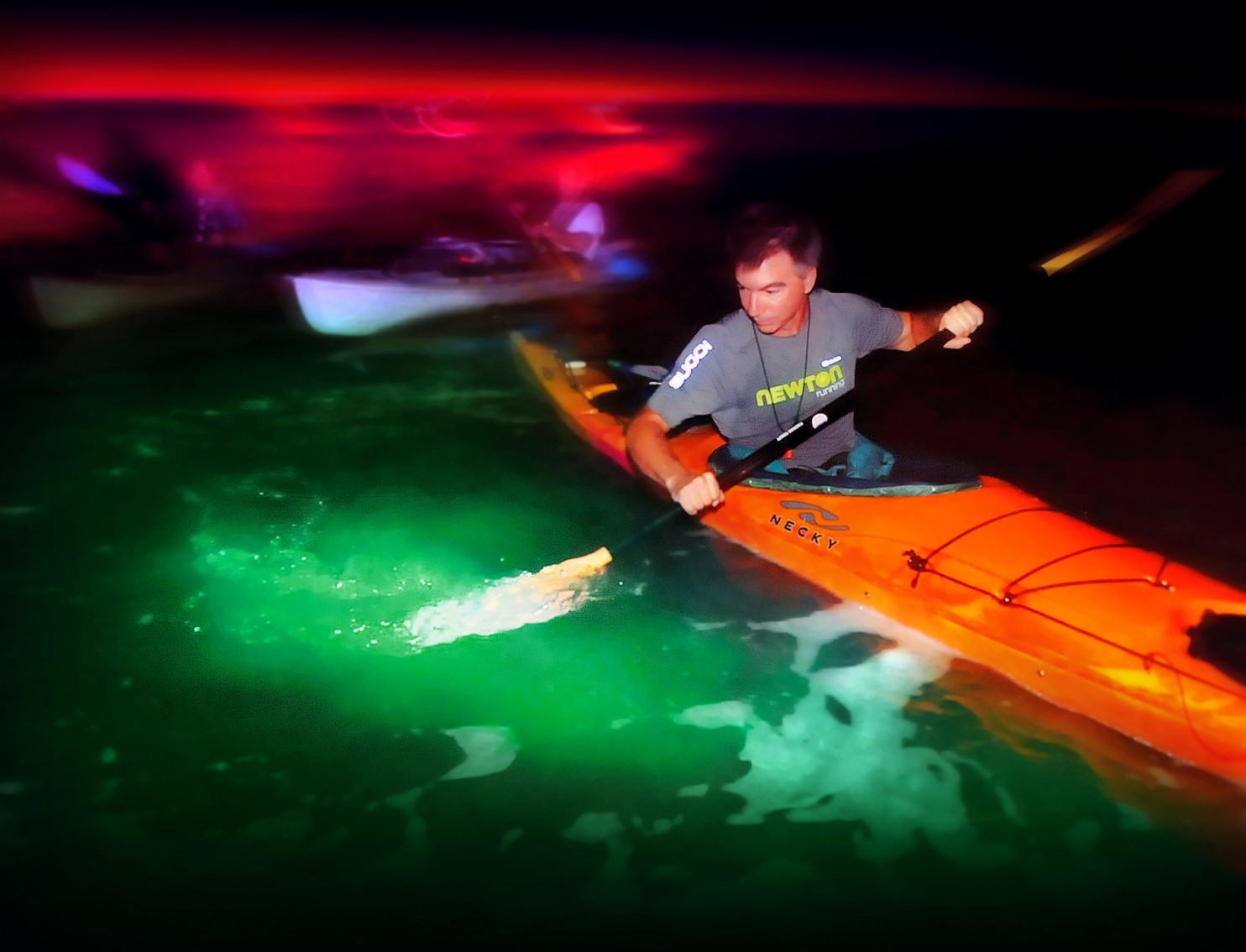January 1, 2016
Lakes around the world are growing rapidly warmer, according to a new scientific study that warns of potential consequences ranging from depleted fisheries to harmful algae blooms that kill fish and contaminate water supplies for cities large and small.

January 1, 2016
Lakes around the world are growing rapidly warmer, according to a new scientific study that warns of potential consequences ranging from depleted fisheries to harmful algae blooms that kill fish and contaminate water supplies for cities large and small.

Seals rest on the shoreline of Russia’s Lake Baikal. Scientists say the lake is one of hundreds around the world that are rapidly warming because of climate change. (Gabdurakhamano/National Science Foundation.)
Hotter freshwater lakes are yet another sign of global climate change, and their increasing temperatures are happening at a faster rate compared to the warming seen in the oceans and atmosphere, a team of scientists report in the peer-reviewed journal Geographical Research Letters.
The study is based on decades of measurements from 235 lakes that contain more than half the world’s fresh water supply. On average, temperatures are rising by about six-tenths of a degree Fahrenheit per decade, a rapid increase by geological standards.
The results are a “wake-up call,” especially for regions that rely on lakes for food and drinking water, said Henry Gholz, a program director for environmental biology at the National Science Foundation, which co-funded the research along with NASA.
“Our knowledge of how lakes are responding to global change has been lacking,” Gholz said.

Climate change is speeding up the evolution of microscopic ocean creatures. – Massive bloom or surface aggregation of Trichodesmium near New Caledonia in the tropical Pacific Ocean, as viewed by a satellite from space (long brownish streaks are the bloom; white objects are clouds). Blooms such as these can stretch for hundreds of kilometers across the surface of the tropical oceans. (Photo credit: NASA EarthWatch)
The study, the largest of its kind, involved more than 60 scientists who used temperature records as well as satellite data to gauge changes over time, from Lake Tahoe on the California-Nevada border to the tropical lakes of central Africa to partially frozen lakes in Scandinavia.
The most dramatic increases were observed at far-northern lakes, which are warming at an average rate of 1.3 degrees F per decade. But tropical lakes also are warming rapidly, the researchers found. Only a small number of warm-water lakes kept a constant temperature or cooled slightly, a departure from the norm that scientists attributed to local land-use changes such as reforestation that increased shade along the shoreline.
Even small variations in temperature can impact fish and other wildlife, the researchers found. Most significant for many areas was the greater potential for harmful algae blooms, an explosive growth in populations of microscopic plants that can strip oxygen from the water and kill fish. Destructive algae blooms—such as the one in Lake Erie in 2014 that contaminated the water supply for Toledo and other Ohio cities—already are occurring more frequently worldwide.

A Florida algae bloom that literally ‘glows in the dark’ – Bioluminescent algae on Florida’s East Coast are part of increasing numbers of algae blooms in the U.S. — some of which are toxic, with possible impacts including tainted drinking water and poisoned shellfish beds.
Such events are important because of the role played by lakes in sustaining human populations in many parts of the world, said study co-author Stephanie Hampton, a professor at Washington State University’s School of the Environment.
“Lakes are important because society depends on surface water for the vast majority of human uses—not just for drinking water, but manufacturing, energy production, irrigation and crops,” Hampton said. “Protein from freshwater fish is especially important in the developing world.”
A separate report earlier this month predicted the number of severe algae blooms would double over the next century because of a combination of warmer temperatures and increased pollution. By 2115, disruptive events like the one in Toledo will be commonplace rather than exceptional, according to a team of U.S. researchers using climate and watershed models to project future trends. The scientists discussed their findings at the American Geological Union meeting in San Francisco.
Even reducing the amount of nutrient pollution that feeds algae growth—including fertilizers and human and animal waste—will not be enough to prevent destructive algae blooms if warming trends continue, said Noel Aloysius, a post-doctorate researcher at Ohio State University’s Aquatic Ecology Laboratory who presented the findings.
“Our assessment of climate reveals less winter snow, more heavy spring rains and hotter summers,” Aloysius said. “Those are perfect growing conditions for algae.”
Courtesy: Waqshington Post







































































































